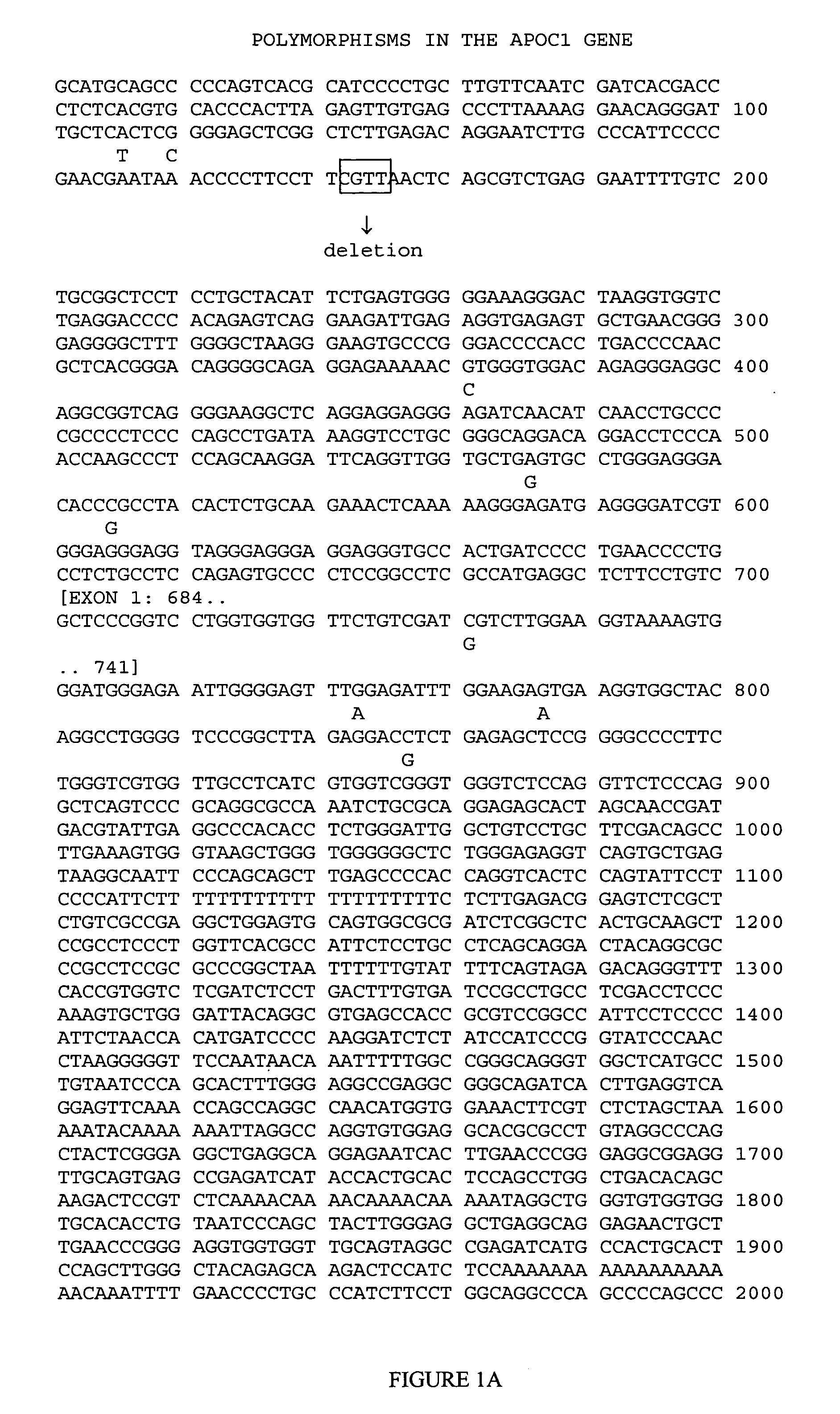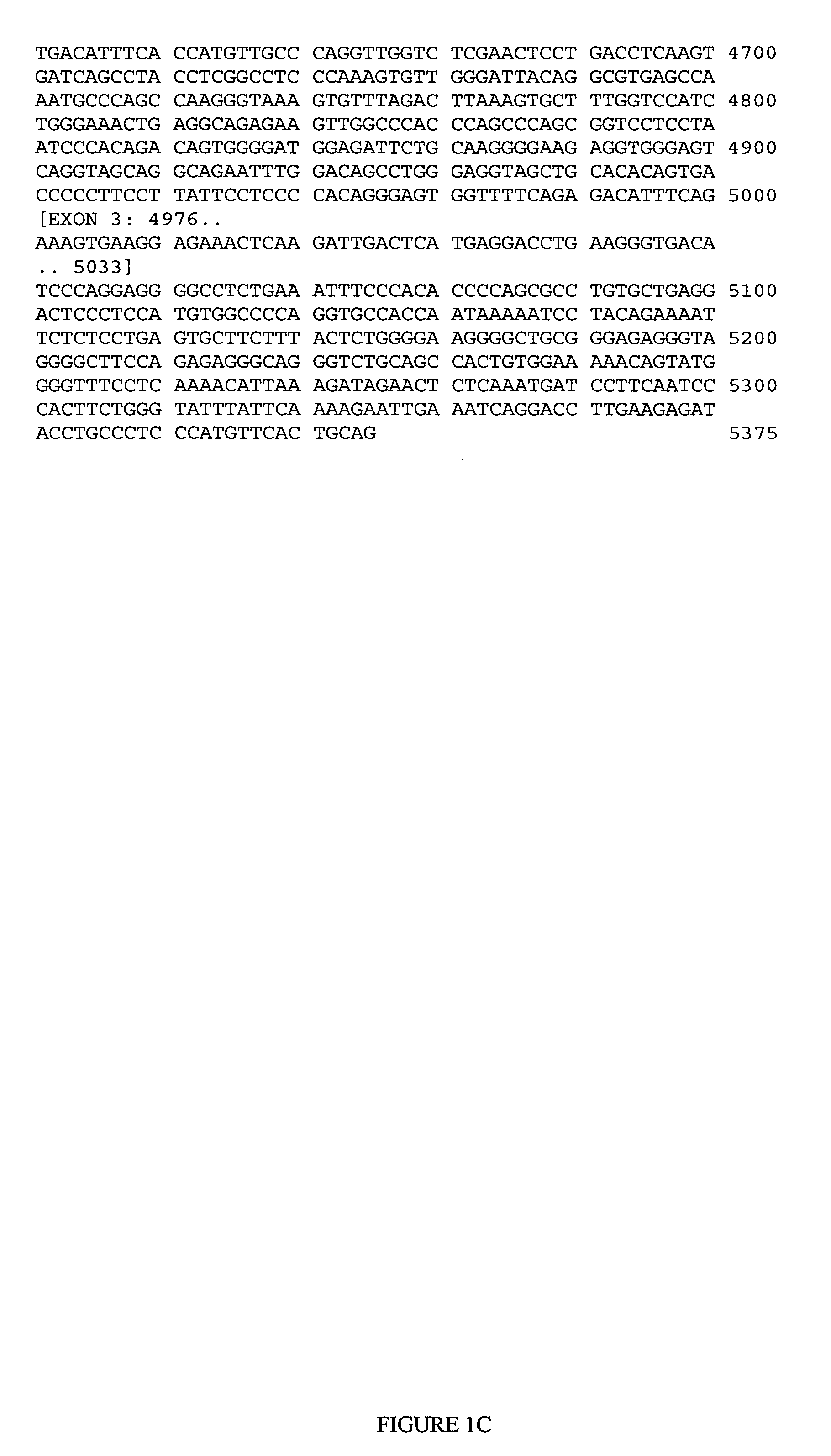APOC1 genetic markers associated with age of onset of Alzheimer's Disease
a genetic marker and age-onset technology, applied in the field of gene and pharmacogenomics, can solve the problems of increasing the pressure on health care professionals to diagnose, affecting the afflicted individual, and reducing the diagnostic accuracy of mci, so as to confirm the diagnosis
- Summary
- Abstract
- Description
- Claims
- Application Information
AI Technical Summary
Benefits of technology
Problems solved by technology
Method used
Image
Examples
example 1
[0115] This example illustrates the clinical and biochemical characterization of selected individuals in a cohort of 449 Caucasian patients diagnosed with AD, each of whom had previously participated in a clinical trial of galantamine.
example 2
[0116] Genomic DNA samples were isolated from blood samples obtained from each member of the cohort and variation within the APOC1 gene was examined by DNA sequencing through capillary electrophoresis. In brief, two regions of interest within the APOC1 gene were amplified by the polymerase chain reaction (PCR) using the primers listed below. The PCR products were then sequenced using dye-terminator sequencing and electrophoresed on an Applied Biosystems 3700 DNA Analyzer.
[0117] For each of the regions of interest, a genomic DNA sample was amplified using “tailed” PCR primers, each of which includes a universal sequence forming a noncomplementary tail attached to the 5′ end of each unique sequence in the PCR primer pairs. The universal tail sequence for the forward PCR primers comprises the sequence TGTAAAACGACGGCCAGT (SEQ ID NO:45) and the universal tail sequence for the reverse PCR primers comprises the sequence AGGAAACAGCTATGACCAT (SEQ ID NO:46). The nucleotide sequences of the f...
example 3
[0129] This example illustrates the deduction of haplotypes from the APOC1 genotyping data generated in Example 2.
[0130] Haplotypes were estimated from the unphased genotypes using a computer-implemented algorithm for assigning haplotypes to unrelated individuals in a population sample, essentially as described in WO 01 / 80156 (Genaissance Pharmaceuticals, Inc., New Haven, Conn.). In this method, haplotypes are assigned directly from individuals who are homozygous at all sites or heterozygous at no more than one of the variable sites. This list of haplotypes is then used to deconvolute the unphased genotypes in the remaining (multiply heterozygous) individuals.
[0131] A quality control analysis was performed on the deduced haplotypes, which included analysis of the frequencies of the haplotypes and individual SNPs therein for compliance with principles of Hardy-Weinberg equilibrium.
PUM
| Property | Measurement | Unit |
|---|---|---|
| polymorphic | aaaaa | aaaaa |
| enzymatic nucleic acid cleavage assay | aaaaa | aaaaa |
| color | aaaaa | aaaaa |
Abstract
Description
Claims
Application Information
 Login to View More
Login to View More - R&D
- Intellectual Property
- Life Sciences
- Materials
- Tech Scout
- Unparalleled Data Quality
- Higher Quality Content
- 60% Fewer Hallucinations
Browse by: Latest US Patents, China's latest patents, Technical Efficacy Thesaurus, Application Domain, Technology Topic, Popular Technical Reports.
© 2025 PatSnap. All rights reserved.Legal|Privacy policy|Modern Slavery Act Transparency Statement|Sitemap|About US| Contact US: help@patsnap.com



